Hedgehog Engine 2 - Textures: Difference between revisions
Justin113D (talk | contribs) Added base page |
Justin113D (talk | contribs) No edit summary |
||
| (5 intermediate revisions by the same user not shown) | |||
| Line 10: | Line 10: | ||
|- | |- | ||
|diffuse | |diffuse | ||
|Albedo, Falloff | |[[#Albedo|Albedo]], [[#Falloff|Falloff]] | ||
|/ | |/ | ||
|- | |- | ||
|transparency | |transparency | ||
|Transparency | |[[#Transparency|Transparency]] | ||
| | |[[#Albedo|Albedo]], Mask | ||
|- | |- | ||
|emission | |emission | ||
|Emission | |[[#Emission|Emission]] | ||
|/ | |/ | ||
|- | |- | ||
|reflection | |reflection | ||
|Flow map, Fur noise | |[[#Flow map|Flow map]], [[#Fur noise|Fur noise]] | ||
|Iridescence reflection, Offset map | |[[#Iridescence reflection|Iridescence reflection]], [[#Offset map|Offset map]] | ||
|- | |- | ||
|specular | |specular | ||
|PRM | |[[#PRM|PRM]] | ||
|/ | |/ | ||
|- | |- | ||
|normal | |normal | ||
|Normal map | |[[#Normal map|Normal map]] | ||
|/ | |/ | ||
|} | |} | ||
| Line 57: | Line 57: | ||
{{Texture Overview | {{Texture Overview | ||
| suffix = _abd | | suffix = <code>_abd</code> | ||
| composition = RGBA | | composition = RGBA | ||
| encoding = * <code>BC1_UNORM</code> when opaque, | | encoding = * <code>BC1_UNORM</code> when opaque, | ||
| Line 63: | Line 63: | ||
}} | }} | ||
[[File:HE2 Textures dif.png|thumb|<code>chr_big_fur_abd.dds</code> from Shadow Generations]] | |||
Albedo textures are color-transparency textures that are sampled directly for the base color of a material. | Albedo textures are color-transparency textures that are sampled directly for the base color of a material. | ||
| Line 72: | Line 73: | ||
{{Texture Overview | {{Texture Overview | ||
| suffix = _alp | | suffix = <code>_alp</code> | ||
| composition = Grayscale | | composition = Grayscale | ||
| encoding = <code>BC4_UNORM</code> | | encoding = <code>BC4_UNORM</code> | ||
}} | }} | ||
[[File:HE2 Textures transparecy.png|<code>cmnisl_blackstone501_tk1_alp.dds</code> from Shadow Generations|alt=cmnisl_blackstone501_tk1_alp.dds from Shadow Generations|thumb]] | |||
Transparency textures determine the transparency of a material. | Transparency textures determine the transparency of a material. | ||
| Line 86: | Line 89: | ||
{{Texture Overview | {{Texture Overview | ||
| suffix = _fal | | suffix = <code>_fal</code> | ||
| composition = Color | | composition = Color | ||
| encoding = <code>BC1_UNORM</code> | | encoding = <code>BC1_UNORM</code> | ||
}} | }} | ||
[[File:HE2 Textures fal.png|thumb|<code>chr_big_fur_fal.dds</code> from Shadow Generations]] | |||
[[File:Falloff animation.gif|thumb|A camera rotating around Suzanne with a raw falloff factor. The albedo texture is black, and the falloff texture is white]] | |||
Falloff textures change the color of the albedo texture based on the viewing angle: The greater the angle between the camera and the surface of the model, the greater the influence. | Falloff textures change the color of the albedo texture based on the viewing angle: The greater the angle between the camera and the surface of the model, the greater the influence. | ||
| Line 102: | Line 106: | ||
{{Texture Overview | {{Texture Overview | ||
| suffix = _ems | | suffix = <code>_ems</code> | ||
| composition = HDR | | composition = HDR | ||
| encoding = <code>BC6H_UF16</code> | | encoding = <code>BC6H_UF16</code> | ||
}} | }} | ||
[[File:HE2 Texture ems.png|thumb|<code>bos_mephiles_body_ems.dds</code> from Shadow Generations]] | |||
Emission textures make parts of a model emit light. These are usually [https://en.wikipedia.org/wiki/High_dynamic_range HDR] textures. | Emission textures make parts of a model emit light. These are usually [https://en.wikipedia.org/wiki/High_dynamic_range HDR] textures. | ||
| Line 116: | Line 120: | ||
{{Texture Overview | {{Texture Overview | ||
| suffix = _prm | | suffix = <code>_prm</code> | ||
| composition = RGBA | | composition = RGBA | ||
| encoding = * <code>BC1_UNORM</code> when no alpha channel is needed, | | encoding = * <code>BC1_UNORM</code> when no alpha channel is needed, | ||
* <code>BC3_UNORM</code> when alpha channel is needed | * <code>BC3_UNORM</code> when alpha channel is needed | ||
}} | }} | ||
[[File:HE2 Textures prm.png|thumb|<code>chr_big_rod_prm.dds</code> from Shadow Generations]] | |||
PRM textures, an abbreviation for “Parameter”, are the defacto PBR textures of | PRM textures, an abbreviation for “Parameter”, are the defacto PBR textures of Hedgehog Engine 2 games. | ||
If you are unfamiliar with Physically based rendering, you should look into the [[Hedgehog Engine 2 - Physically Based Rendering (PBR)|Physically Based Rendering]] documentation before trying to edit materials. | If you are unfamiliar with Physically based rendering, you should look into the [[Hedgehog Engine 2 - Physically Based Rendering (PBR)|Physically Based Rendering]] documentation before trying to edit materials. | ||
| Line 142: | Line 146: | ||
|0.5 | |0.5 | ||
|The engine multiplies the sampled value by 0.5 | |The engine multiplies the sampled value by 0.5 | ||
| | |[[File:HE2 Textures prm r.png|thumb]] | ||
|- | |- | ||
|Green | |Green | ||
| Line 148: | Line 152: | ||
|0.8 | |0.8 | ||
|Blender uses a roughness setup, which is just the inverse of smoothness | |Blender uses a roughness setup, which is just the inverse of smoothness | ||
| | |[[File:HE2 Textures prm g.png|thumb]] | ||
|- | |- | ||
|Blue | |Blue | ||
| Line 154: | Line 158: | ||
|0 | |0 | ||
| | | | ||
| | |[[File:HE2 Textures prm b.png|thumb]] | ||
|- | |- | ||
|Alpha | |Alpha | ||
| Line 162: | Line 166: | ||
AO gets mixed into the lighting, which is difficult to replicate in render engines like Cycles, but doable in Eevee. | AO gets mixed into the lighting, which is difficult to replicate in render engines like Cycles, but doable in Eevee. | ||
| | |[[File:HE2 Textures prm a.png|thumb]] | ||
|} | |} | ||
{{notice | |||
| type = note | |||
| content = Older HE2 games, primarily Sonic Forces and Mario & Sonic at the Rio 2016 Olympic Games use a slightly different PRM setup: | |||
{{{!}} class="wikitable" | |||
{{!}}+ | |||
!Channel | |||
!Contents | |||
!Notes | |||
{{!}}- | |||
{{!}}Red | |||
{{!}}Specular | |||
{{!}}If the value is above 0.9, the material gets treated as completely metallic. | |||
{{!}}- | |||
{{!}}Green | |||
{{!}}Smoothness | |||
{{!}}Same as above | |||
{{!}}- | |||
{{!}}Blue | |||
{{!}}Ambient Occlusion | |||
{{!}} | |||
{{!}}- | |||
{{!}}Alpha | |||
{{!}}Metallic | |||
{{!}}Only used in select shaders like <code>MCommon</code>, where the specular-above-0.9 check isn't done | |||
{{!}}} | |||
}} | |||
=== Normal map === | === Normal map === | ||
{{Texture Overview | {{Texture Overview | ||
| suffix = _nrm | | suffix = <code>_nrm</code> | ||
| composition = RG | | composition = RG | ||
| encoding = <code>BC5_UNORM</code> | | encoding = <code>BC5_UNORM</code> | ||
}} | }} | ||
[[File:HE2 Textures nrm.png|thumb|<code>chr_big_rod_nrm.dds</code> from Sonic X Shadow Generations]] | |||
Normal map textures are used for faking bumps and dents on a model to affect lighting, falloff, environment maps and similar. | Normal map textures are used for faking bumps and dents on a model to affect lighting, falloff, environment maps and similar. | ||
| Line 192: | Line 223: | ||
{{Texture Overview | {{Texture Overview | ||
| suffix = _flw | | suffix = <code>_flw</code> | ||
| composition = RG | | composition = RG | ||
| encoding = <code>BC5_UNORM</code> | | encoding = <code>BC5_UNORM</code> | ||
}} | }} | ||
[[File:HE2 Textures flw.png|thumb|<code>chr_shadow_fur_flw.dds</code> from Shadow Generations]] | |||
Flow textures are two-component textures that, similar to normal maps, encode a direction. Each pixel determines the direction of “flow” to use when sampling the noise texture. | Flow textures are two-component textures that, similar to normal maps, encode a direction. Each pixel determines the direction of “flow” to use when sampling the noise texture. | ||
| Line 209: | Line 240: | ||
{{Texture Overview | {{Texture Overview | ||
| suffix = _fur | | suffix = <code>_fur</code> | ||
| composition = RGBA | | composition = RGBA | ||
| encoding = <code>BC3_UNORM</code> | | encoding = <code>BC3_UNORM</code> | ||
}} | }} | ||
[[File:HE2 Textures fur.png|thumb|<code>chr_shadow_fur_fur.dds</code> from Shadow Generations]] | |||
Fur noise textures get sampled based on the direction of a flow map to create a “flowing lines” type of pattern. | Fur noise textures get sampled based on the direction of a flow map to create a “flowing lines” type of pattern. | ||
| Line 225: | Line 256: | ||
{{Texture Overview | {{Texture Overview | ||
| suffix = _ref | | suffix = <code>_ref</code> | ||
| composition = Color | | composition = Color | ||
| encoding = <code>BC1_UNORM</code> | | encoding = <code>BC1_UNORM</code> | ||
| Line 231: | Line 262: | ||
Iridescence shaders use these reflection textures to create their effect of the same name. | Iridescence shaders use these reflection textures to create their effect of the same name. | ||
{| class="wikitable" width="128px" style="margin-left: auto; margin-right: 0px;" | |||
|- | |||
| [[File:HE2 Textures ref.png|center]] | |||
<code>w05_ruins_biometal_ref.dds</code> from Sonic X Shadow Generations | |||
|} | |||
<div style="clear: both"/> | <div style="clear: both"/> | ||
| Line 237: | Line 274: | ||
{{Texture Overview | {{Texture Overview | ||
| suffix = _off | | suffix = <code>_off</code> | ||
| composition = RG | | composition = RG | ||
| encoding = <code>BC5_UNORM</code> | | encoding = <code>BC5_UNORM</code> | ||
}} | }} | ||
[[File:HE2 Textures off.png|thumb|<code>w09_btl02_poisonswamp_s3_jh1_off.dds</code> from Shadow Generations]] | |||
Offset maps are basically normal maps that are used to distore another texture by shifting the sample coordinate. | Offset maps are basically normal maps that are used to distore another texture by shifting the sample coordinate. | ||
Latest revision as of 08:58, 12 July 2025
Hedgehog Engine 2 games limit themselves to a few texture types, which can make configuring materials difficult, as many shaders use certain types differently than what their name suggests.
Here is a list of all texture types and how they are most commonly used:
| Type | Primarily used with | Occasionally used with |
|---|---|---|
| diffuse | Albedo, Falloff | / |
| transparency | Transparency | Albedo, Mask |
| emission | Emission | / |
| reflection | Flow map, Fur noise | Iridescence reflection, Offset map |
| specular | PRM | / |
| normal | Normal map | / |
File formats and encodings
Textures are always stored in DDS files.
HE2 is programmed with Direct3D 11 (or newer), which means all DDS encodings are available for use.
More info on DDS block compression can be found here.
File streaming
Many textures in Frontiers and onwards make use of file streaming to reduce texture-load-time and reuse the same texture between multiple archives.
You can pack/unpack/view info of streamed texture packages using NeedleTextureStreamingUtility.
Kinds of textures
The majority of textures used by materials are one of the following kind of textures.
Albedo
| Texture overview | |
|---|---|
| File Suffix | _abd
|
| Composition | RGBA
|
| Recommended encoding |
|
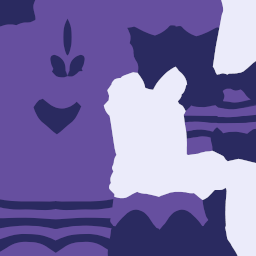
chr_big_fur_abd.dds from Shadow GenerationsAlbedo textures are color-transparency textures that are sampled directly for the base color of a material.
See albedo for reference.
Transparency
| Texture overview | |
|---|---|
| File Suffix | _alp
|
| Composition | Grayscale
|
| Recommended encoding |
|
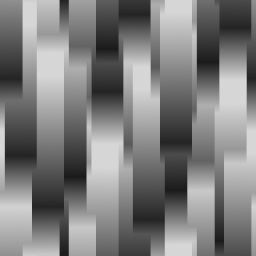
cmnisl_blackstone501_tk1_alp.dds from Shadow GenerationsTransparency textures determine the transparency of a material.
Usually transparency is relayed to Albedo textures, and actual opacity textures are only used when special alpha compositing happens.
Falloff
| Texture overview | |
|---|---|
| File Suffix | _fal
|
| Composition | Color
|
| Recommended encoding |
|
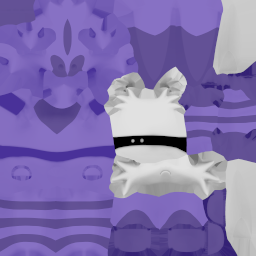
chr_big_fur_fal.dds from Shadow Generations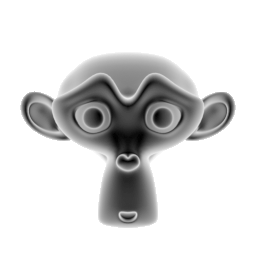
Falloff textures change the color of the albedo texture based on the viewing angle: The greater the angle between the camera and the surface of the model, the greater the influence.
Depending on the shader, the falloff color either gets mixed with the albedo color or added to it.
Additionally, shaders with falloff colors or textures basically always come with a parameter that controls how the falloff factor gets calculated.
Emission
| Texture overview | |
|---|---|
| File Suffix | _ems
|
| Composition | HDR
|
| Recommended encoding |
|
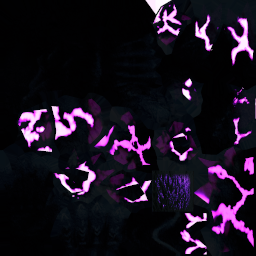
bos_mephiles_body_ems.dds from Shadow GenerationsEmission textures make parts of a model emit light. These are usually HDR textures.
See emission for reference.
PRM
| Texture overview | |
|---|---|
| File Suffix | _prm
|
| Composition | RGBA
|
| Recommended encoding |
|
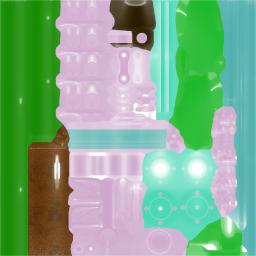
chr_big_rod_prm.dds from Shadow GenerationsPRM textures, an abbreviation for “Parameter”, are the defacto PBR textures of Hedgehog Engine 2 games.
If you are unfamiliar with Physically based rendering, you should look into the Physically Based Rendering documentation before trying to edit materials.
Each channel contains one PBR map:
| Channel | Contents | "Default" value | Notes | Example from chr_big_rod_prm.dds
|
|---|---|---|---|---|
| Red | Specular | 0.5 | The engine multiplies the sampled value by 0.5 | 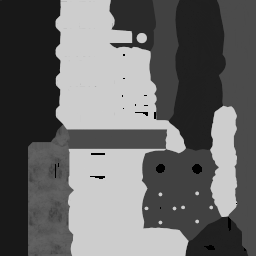 |
| Green | Smoothness | 0.8 | Blender uses a roughness setup, which is just the inverse of smoothness | 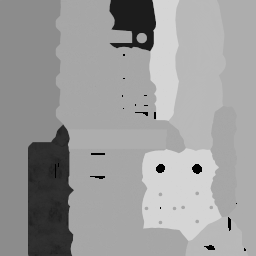 |
| Blue | Metallic | 0 | 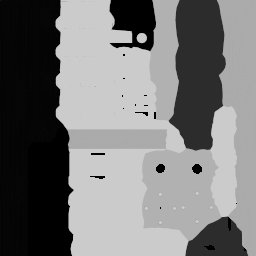 | |
| Alpha | Ambient Occlusion | 1 | Many tutorials claim that AO is just multiplied into the albedo channel, which is not true.
AO gets mixed into the lighting, which is difficult to replicate in render engines like Cycles, but doable in Eevee. |
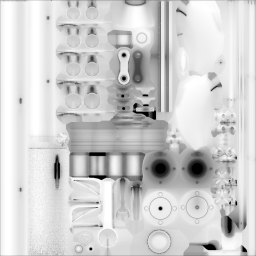 |
| Channel | Contents | Notes |
|---|---|---|
| Red | Specular | If the value is above 0.9, the material gets treated as completely metallic. |
| Green | Smoothness | Same as above |
| Blue | Ambient Occlusion | |
| Alpha | Metallic | Only used in select shaders like MCommon, where the specular-above-0.9 check isn't done
|
Normal map
| Texture overview | |
|---|---|
| File Suffix | _nrm
|
| Composition | RG
|
| Recommended encoding |
|
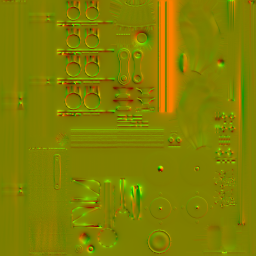
chr_big_rod_nrm.dds from Sonic X Shadow GenerationsNormal map textures are used for faking bumps and dents on a model to affect lighting, falloff, environment maps and similar.
See normal mapping for reference.
Other
Flow Map
| Texture overview | |
|---|---|
| File Suffix | _flw
|
| Composition | RG
|
| Recommended encoding |
|
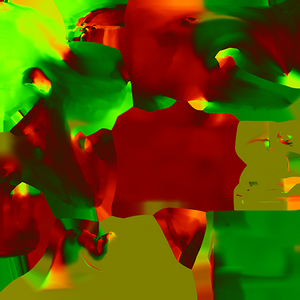
chr_shadow_fur_flw.dds from Shadow GenerationsFlow textures are two-component textures that, similar to normal maps, encode a direction. Each pixel determines the direction of “flow” to use when sampling the noise texture.
Fur Noise
| Texture overview | |
|---|---|
| File Suffix | _fur
|
| Composition | RGBA
|
| Recommended encoding |
|
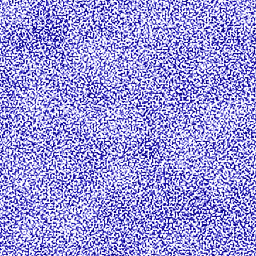
chr_shadow_fur_fur.dds from Shadow GenerationsFur noise textures get sampled based on the direction of a flow map to create a “flowing lines” type of pattern.
The color channel gets multiplied into the albedo color, while the alpha channel determine the specularity.
This allows for characters to have fine details without needing huge textures.
Iridescence reflection
| Texture overview | |
|---|---|
| File Suffix | _ref
|
| Composition | Color
|
| Recommended encoding |
|
Iridescence shaders use these reflection textures to create their effect of the same name.
|
Offset map
| Texture overview | |
|---|---|
| File Suffix | _off
|
| Composition | RG
|
| Recommended encoding |
|
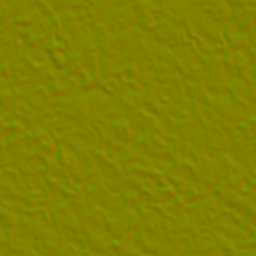
w09_btl02_poisonswamp_s3_jh1_off.dds from Shadow GenerationsOffset maps are basically normal maps that are used to distore another texture by shifting the sample coordinate.
These are often used with things like water or wind.
